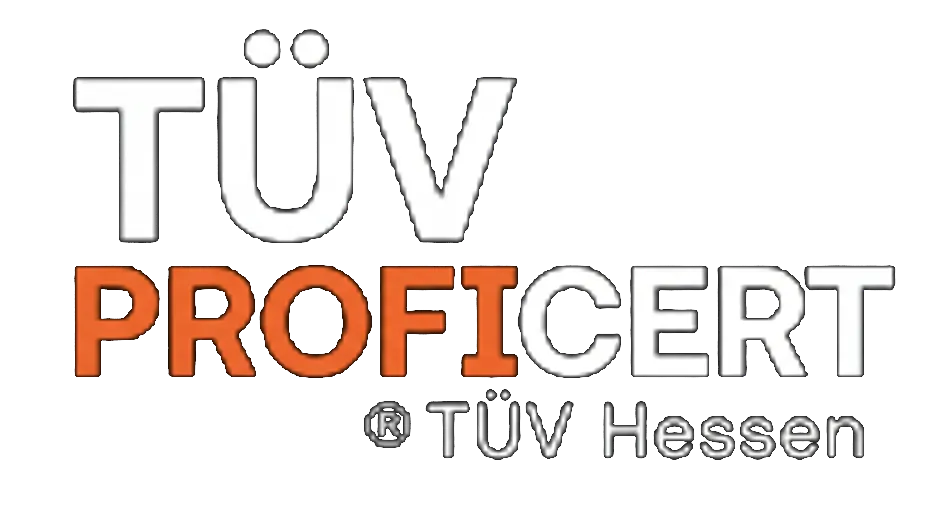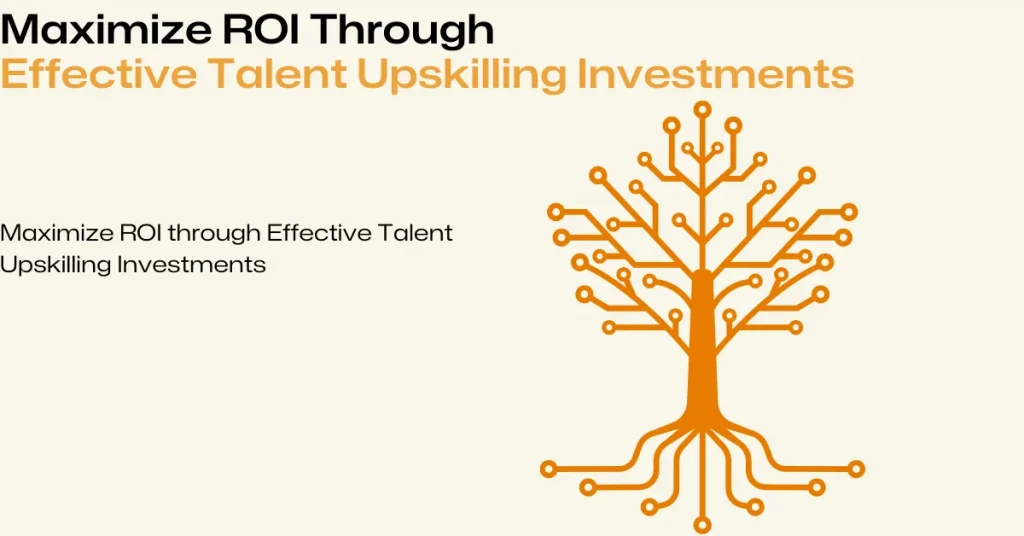Maximize ROI through Effective Talent Upskilling Investments
Ever wondered if your company’s training budget is actually worth it or just a fancy line on the expense report? Well, buckle up because mastering how to maximize ROI with talent upskilling is not just smart—it’s essential in today’s competitive landscape. With the rapid pace of technological change and evolving job roles, investing in your workforce’s skill set isn’t a nice-to-have anymore—it’s a must. Without a strategic approach, upskilling efforts can become a costly gamble rather than a game changer. Today, we’ll unpack how to turn talent development into a measurable, impactful investment. From identifying skill gaps to leveraging innovative learning platforms like Amatum, you’ll learn practical steps to ensure every dollar spent yields exponential returns. Ready to boost productivity, attract top talent, and build a resilient organization? Let’s dive in.
1. Understanding the True Cost of Skill Gaps
Before you can maximize ROI with talent upskilling, you need to know what’s costing your business left and right. Skill gaps don’t just mean underperforming employees; they lead to missed opportunities, project delays, and even customer dissatisfaction. According to a report by the World Economic Forum, over 50% of all employees will need reskilling by 2025. Granted, that sounds like a lot, but it highlights the importance of proactive development. Ignoring these gaps can be more costly than proactive investments. For example, a study from McKinsey estimates that companies can see a productivity boost of up to 20% when skill gaps are addressed effectively. The key is identifying these gaps early with tools like Amatum’s Skills Analyzer. It provides a data-driven view of your team’s competencies, helping you target your upskilling efforts where they count the most.
2. Aligning Upskilling with Business Goals
Upskilling is not a random act of kindness—you need strategic alignment. Think of talent development as investing in a garden. Without knowing what flowers you want to bloom, you might end up watering weeds. Every skill upgrade should directly support your company’s core objectives. For example, if digital transformation is on the frontline, then fostering skills in cloud computing, data analytics, or AI is crucial. Linking learning initiatives to measurable outcomes, such as increased sales or faster product delivery, ensures you see the ROI. Cisco’s 2022 report suggests that organizations with clear learning goals aligned with their digital strategies see 2.5 times higher ROI. Tools like Amatum facilitate this by customizing learning journeys based on your unique needs, ensuring efforts translate into tangible business results.
3. Creating a Culture of Continuous Learning
The days of one-and-done training sessions are long gone. Today’s workforce craves ongoing growth opportunities, and companies that foster a culture of continuous learning are winning big. Think of it as staying ahead of the curve rather than constantly playing catch-up. According to LinkedIn’s 2023 Workplace Learning Report, 94% of employees say they would stay longer at a company that invests in their career development. Incorporating learning into daily workflows—whether through microlearning, mentorship, or internal knowledge sharing—boosts engagement and retention. Plus, continuous learning fuels innovation, which is essential if you want to maximize that all-important ROI with talent upskilling.
4. Leveraging Technology to Accelerate Upskilling Efforts
If you’re still stubbornly relying solely on traditional classroom sessions, it’s time to rethink. Digital learning platforms like Talemai and other e-learning tools make upskilling scalable, flexible, and — dare we say — enjoyable. They allow personalized learning paths, interactive content, and real-time tracking. The right tech stack turns upskilling from a tedious chore into a strategic advantage. Plus, data analytics from these platforms can effectively measure progress and ROI, convincing even the most skeptical CFO that every dollar is well spent. In the end, technology isn’t just a facilitator; it’s an accelerant for smarter skill building.
5. Implementing Targeted, Measurable Upskilling Programs
To ensure you’re not throwing money into a learning black hole, focus on targeted programs with clear KPIs. For example, rather than generic leadership training, opt for modules tailored to the roles that impact your bottom line most—sales, project management, or technical specialists. Align these programs with KPIs like improved productivity, higher customer satisfaction scores, or faster project delivery. A Harvard Business Review study shows that organizations with highly targeted training report 24% higher profit margins. Using tools like Amatum helps identify these focus areas and monitor progress, turning guesswork into strategic decisions. Remember, if it cannot be measured, it cannot be improved.
6. Cultivating Leadership to Support Upskilling Initiatives
Leadership buy-in isn’t just a nice-to-have; it’s the secret sauce. When top executives champion learning, it trickles down into a culture where upskilling isn’t seen as a checkbox but as a strategic imperative. Leaders should set the example by participating in training themselves and advocating for continuous development. Research from Deloitte highlights that organizations with strong leadership involvement in learning initiatives see up to 30% higher ROI. This alignment ensures that all levels of the organization prioritize and support upskilling efforts, creating an environment where growth is baked into the company DNA.
7. Evaluating and Adjusting Your Upskilling Strategy
What worked last year might not cut it today. Regular evaluation of your upskilling programs ensures they stay relevant and impactful. Data-driven tools and feedback loops help identify what’s working, what’s not, and where to pivot. For instance, if a certain skill becomes obsolete or less relevant, reallocate resources accordingly. Staying flexible allows you to maximize ROI with talent upskilling by continuously refining your approach. Think of it as tending your garden—sometimes plants need pruning, sometimes a little extra fertilizer to flourish. The key is staying attentive and adaptable.
8. Partnering with Experts for Better Outcomes
Sometimes, trying to go it alone is like bringing a spoon to a swordfight. Engaging with professional upskilling platforms such as Amatum or industry-renowned training providers can dramatically improve your chances of success. These partnerships bring proven methodologies, curated content, and expert guidance directly into your organization’s learning ecosystem. Additionally, industry studies show that companies leveraging external expertise achieve faster skill acquisition and better ROI. When considering your upskilling investments, think of external partners as accelerators that turn learning initiatives into strategic assets instead of expensive distractions. For tailored solutions, feel free to contact Amatum’s team.
Maximize ROI with Talent Upskilling: Key Insights & Tips
| Strategy | Cost vs. Benefit | Implementation Tip | Expected ROI |
|---|---|---|---|
| Target High-Impact Skills | Lower investment, higher productivity gains | Focus on skills aligned with business goals | Maximized performance boost |
| Leverage Online Training Platforms | Cost-effective; scalable for all employees | Choose interactive, gamified modules for engagement | Faster skill acquisition, measurable outcomes |
| Encourage Continuous Learning | Ongoing costs, sustained ROI | Create a learning culture with recognition programs | Long-term competitive advantage |
| Measure & Adjust Programs | Initial investment needed for analytics tools | Use KPIs like productivity, retention rates | Refined efforts, higher returns |
| Leadership Involvement | Time commitment, but boosts alignment | Executives to champion upskilling initiatives | Better buy-in, faster ROI realization |
Maximizing ROI Through Talent Upskilling: Frequently Asked Questions
Upskilling your team is a strategic investment that can significantly boost company performance and individual growth. Here are common questions to help you understand how to maximize ROI from talent development initiatives.
What is the best way to identify skills gaps within my team?
Start by conducting regular performance reviews, skills assessments, and gathering feedback to pinpoint areas where your team needs growth. Using data-driven tools and aligning skills with future business goals ensures targeted upskilling efforts.
How can I ensure upskilling initiatives translate into measurable business outcomes?
Align training programs with specific KPIs, such as productivity, customer satisfaction, or sales metrics. Regularly track progress and adjust learning strategies to ensure they directly contribute to your business objectives.
Can upskilling be tailored to individual career goals?
Absolutely. Personalized learning paths that consider each employee’s aspirations and current skills help increase engagement and retention, while also aligning development with organizational needs.
What role does leadership support play in maximizing ROI from talent upskilling?
Strong leadership commitment fosters a culture of continuous learning, encourages participation, and ensures resources are allocated effectively. Leaders also serve as role models by engaging actively in upskilling efforts.
How do I choose the right training programs to ensure skill transfer and retention?
Pick programs that are practical, hands-on, and relevant to daily tasks. Incorporate active learning techniques like projects and real-world simulations to enhance retention and application of skills.
Do I need to measure training effectiveness regularly, and how?
Yes, regularly evaluate through assessments, feedback, and performance metrics to determine if training is delivering the desired outcomes. Continuous measurement allows for timely improvements and better ROI.
How can I foster a culture of continuous learning to maximize talent development ROI?
Encourage ongoing learning through incentives, recognition, and creating opportunities for employees to share knowledge. Embedding learning into daily workflows helps sustain long-term growth and engagement.
What are common pitfalls to avoid when investing in upskilling for ROI?
Avoid one-size-fits-all approaches, neglecting individual needs, or failing to align training with business goals. Additionally, skipping ongoing evaluation can lead to ineffective investments and missed opportunities.
Key Takeaways
As we wrap up, remember that maximizing ROI with talent upskilling isn’t just smart—it’s essential for staying ahead of the curve. From pinpointing skill gaps with sophisticated tools like Amatum’s Skills Analyzer to aligning upskilling efforts with your strategic goals, every step counts in building a more resilient, innovative workforce. Creating a culture of continuous learning and leveraging cutting-edge technology turns development into a strategic advantage rather than a costly afterthought.
Consistently evaluate, refine, and partner with expert providers to ensure your investments hit the mark. With a clear focus, targeted programs, and leadership support, your organization can reap the rewards of higher productivity, improved customer satisfaction, and substantial profit growth. Don’t settle for average—take the leap now to unlock your company’s true potential. Ready to transform your talent development strategy? Explore Amatum’s solutions and make smart investments that truly maximize ROI with talent upskilling today.



